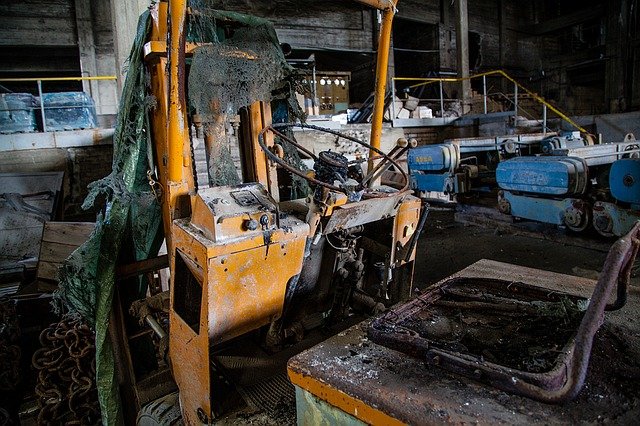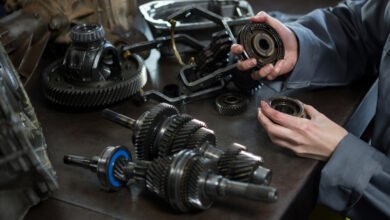
Do you need a stacker for your company’s material handling team? Here are the criteria for choosing the right type of professional forklift.
Choose a stacker
What is a stacker?
The stacker is essential handling equipment for lifting and stacking heavy loads, especially in a storage space. This machine is also used for loading and unloading palletized goods.
In reality, the stacker is a kind of pallet truck equipped with a mast and which allows you to lift heavy goods on a pallet. It allows you to stack goods or store them on high shelves. Average Cost of forklift
There are different types of stacker. The choice between these models is based on different criteria.
What is a stacker made of?
The stacker is a lifting device consisting of:
- A chassis ;
- Four wheels ;
- Two forks;
- Pebbles;
- Matt ;
- A drawbar;
A lifting system controlled by a hydraulic pump.
The equipment has been designed to move through the shelves of storage warehouses.
The different types of stacker:
There are three main categories of stacker which differ according to their mode of operation, namely:
The manual stacker
The manual stacker is easily recognizable by its small dimensions. Like pallet trucks, this equipment is quite compact because it does not have a motor. This category of stacker is only suitable for handling pallets weighing a maximum of 2 tonnes. The equipment is suitable for handling heavy loads but at an occasional working frequency.
The semi-electric stacker:
This type of stacker, also called a stacker with assistance, has a manual tiller that allows the machine to be moved a short distance. The machine also has an electric tiller. The machine works with a chargeable motor equipped with a battery to be recharged on an electrical outlet. The lifting system is activated by a button and allows the load to be raised up to a height of 3 meters. Telescopic double mast stacker models can lift the load more than 3 meters.
The electric stacker
Equipped with an electric motor, this type of machine is particularly imposing compared to the other two versions. The electric stacker is the most suitable for loading/unloading heavy loads, weighing between 1.5 tons and 2.5 tons. The handler operator only has to press the control buttons to activate the lifting system. The operation of this machine does not require physical effort. The electric stacker is the most suitable for regular use in the transport of equipment and industrial products. In addition, it can raise the pallet up to a height of 4 meters.
The criteria for choosing a stacker:
In addition to energy, the choice of stacker is based on other criteria, the most important of which are:
The type of goods to be lifted:
It is advisable to consider, first of all, the specificity of the goods to be lifted and in particular the dimensions of the pallets to be stacked on the ground and at height. These indices make it possible in particular to define the spacing required between the forks. Generally, the distance between the forks is adjustable. It is essential to check the minimum gap and the maximum gap between the forks to ensure that you can carry the pallets without the risk of them falling during the maneuver.
It is also essential to focus on the lifting weight suitable for the industrial production line. As an indication, manual stackers have a limited lifting capacity with a maximum load of around 1500 kg or 2000 kg for the most efficient models. The electric stacker is the essential equipment for lifting very heavy loads.
The area available for the maneuvers:
The stacker must be able to move through the warehouse racks. Take into account, therefore, the surface between the racks for the movement of the driver operator. You must choose a stacker length and width suitable for the working environment. Particularly compact, the manual stacker is suitable for narrow spaces. The models of machines with electric or electric assistance are much more imposing.
Lifting height:
It is also essential to take into account the lifting height of the machine. The lifting capacity must correspond, at least, to the height of the shelves. This guarantees great practicality and offers optimal security.
Battery life:
If you opt for a semi-electric or electric stacker, check the battery life. The minimum battery life should be around 3 hours. The most developed electric stackers are equipped with a battery offering an autonomy of almost 10 hours. Tips when you Inspect the forklift.
Lifting speed:
Load lifting speed varies from machine to machine, depending on various factors. The performances differ in particular according to the power of the engine for the semi-electric or electric stackers and the strength of the arms for the manual versions. How to drive forklift
The stacker is essential for storage and loading/unloading in storage warehouses. The use of the machine avoids the risks relating to manual handling, wear and tear, even the destruction of the goods during the shelving and order preparation phase. Individuals who carry out storage and/or heavy load carrying work themselves also need a stacker.



